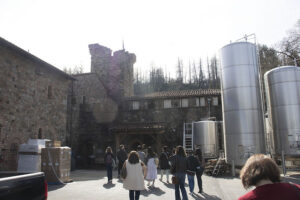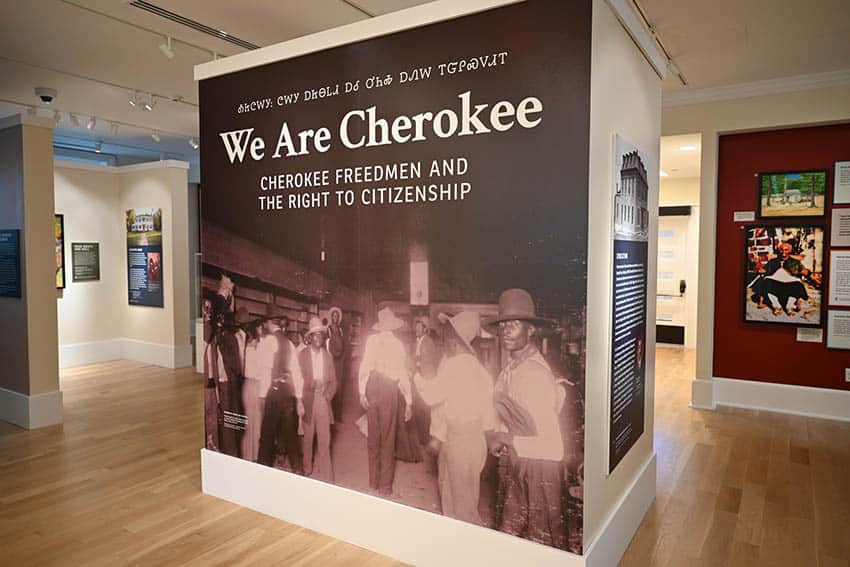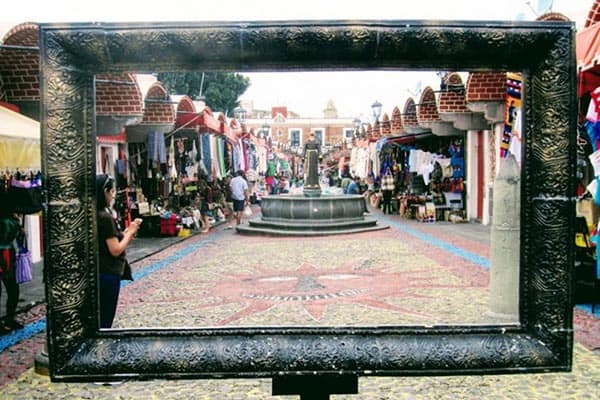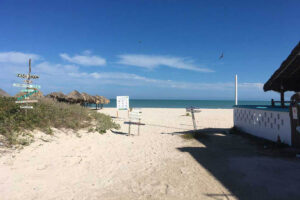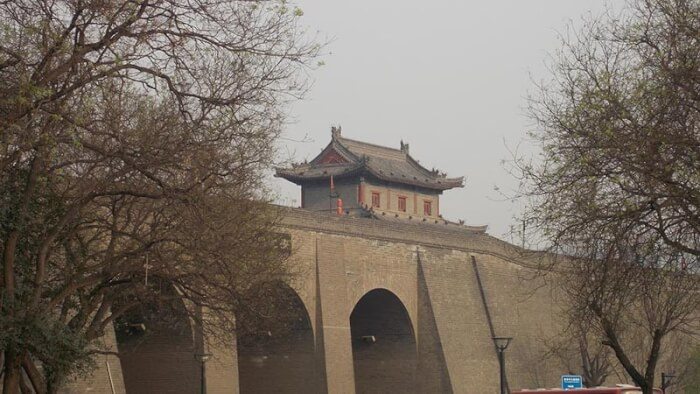
Terracotta Warriors and More in Xi’an
By Eric D. Goodman
When planning a first visit to mainland China, three places generally top the list. First is Beijing, where the sights of ancient, Imperial China combine with Mao’s modern vision. The

second is Shanghai, a flashy, futuristic city nearly sinking under the weight of its own rapid development. The third is Xi’an, the first capital of unified China.
If you haven’t planned a trip to China, Xi’an may not ring a bell. But you know its main attraction: the Terracotta Army—the most important archeological discovery of the 20th century.

My daughter, Nicole, and I recently had the opportunity to visit Xi’an and it’s terracotta marvels for her sweet 16.
Despite more than eight million residents, Xi’an had a small-town feel, after Beijing and Shanghai. (Eight million is small-town given the larger cities’ populations of 21 to 25 million!)
Of Xi’an’s eight million residents, we were most fascinated with the 8,000 that aren’t counted on census records.
All about the Terracotta
The official Terracotta Replica Museum provides an interesting way to prepare for the army itself. Our guide showed us how terracotta army figures were made thousands of years ago, and how they are still made today using the same ancient process, with bricks set over the opening of the fired kiln instead of a door.
The main difference between then and now is that the originals are each unique; the ones produced at the replica museum, for the most part, are molds of the same several examples.
After visiting the factory and replica museum, we exited through the gift shop. One of the most interesting shops we encountered during our time in China, it featured not only replicas of the terracotta warriors, but other statues of stone and jade, ranging from miniature to larger-than-life.
A life-sized replica carved from a solid slab of precious, green jadeite was priced at about $20,000; perhaps a bargain given the value of the jadeite itself! For all the replicas and original works in the shop, the most interesting—to us—were the terracotta replicas—or, as we coined, repplicatta.

An Army Fit for an Emperor
If the Terracotta Replica Museum impressed us, the real deal blew us away. Located on the spot where the enormous burial site was discovered, the Terracotta Museum was unlike any other in the world. Thousands of unique, life-sized terracotta statues stood before us. When the Terracotta Army was uncovered forty years ago, experts heralded the find as the greatest archeological discovery of the century.
No one expected that such a treasure was buried in the area. In 1974, four peasants struck gold when digging a well—or in this case, clay. The artifacts, in the form of human body parts, told the farmers to stop digging and contact the authorities.
Indeed, 8,000 six-foot soldiers, each one created uniquely using coiling artistry, not molds—stood waiting under the earth’s surface. Each statue had distinctive features, from the armor to the fingers to the decorations and positions of hands—every face as unique as a snowflake. To verify this, scientists used complex face-recognition software. Sure enough, there is no one set of twins in the army.
We didn’t have time to look each warrior in the eyes for ourselves but spread out before us, we witnessed the thousands: footmen and equestrians, horses and generals, archers and swordsmen. It’s one thing to see pictures and another to actually see the great field of terracotta warriors in front of you.
We visited two pits, one completely excavated, the other still active. Most of the terracotta soldiers on display were complete; some were still being pieced together, fragments missing. In pit two, many of the figures remained broken and partially uncovered, showing visitors how they looked when discovered. We scanned a sea of dirt, the soldiers almost appearing as though treading water within the pit.

The Indiana Jones of Chinese Archeology?
After witnessing both pits and the terracotta warriors within them, we were fortunate enough to meet one of the four farmers who discovered the army while digging a well. We shook his hand and asked him to autograph a copy of the book about his discovery. He brushed his name on the title page. Three of the four original farmers who discovered the terracotta army remain alive. They live comfortable lives and are taken care of by the state for their discovery.
The farmers were nearly forgotten until foreign visitors, such as presidents and ambassadors, expressed an interest in meeting the terracotta army’s founding fathers.

During one such visit by President Bill Clinton, the farmer we met was prepped for the important meeting and attempted to learn a few phrases in English. When he shook hands with Clinton, meaning to say “how are you,” the farmer asked, “who are you.”
The President grinned. “Why I’m the President of the United States,” He answered to laughter all around.
We laughed at the story as we left the site of the terracotta army. Our last visit in the museum complex was to the mound where Emperor Qin Shi Huangdi himself was buried (within the same 35-mile region). It was for him—the first Emperor of unified China—that the terracotta army was constructed about 2,200 years ago.
Terracotta Junior
The Hanyangling (or Han Yangling) Mausoleum and Museum was the burial ground for another Emperor, filled with miniature Terracotta figures.
Located about 12 miles north of Xi’an in the farming village of Zhangjiawan, this was the final resting place of Emperor Liu Qi and his wife, Empress Wang, and was built in 153 A.D. More than 3,000 artifacts have been excavated from the pits, surpassing even the number found in the main Terracotta Museum.
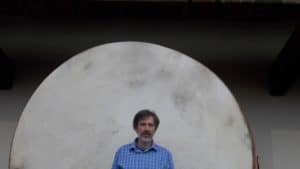
The terracotta figures here included pigs, sheep, cows, and soldiers. The glass floor allowed us to look down into the pits and see the figurines as we walked. A hologram movie detailed the history and discovery. Especially interesting: the remains of an old dirt-constructed city wall.
We’d had our fill of terracotta for the day. We were ready for some Chinese food. The local farmer’s restaurant where we ate served their offerings on glazed terracotta dishes.
Wild Geese, Big and Small
Although many zip in and out just to see the terracotta, a visit to Xi’an isn’t really complete without a visit to Jianfu Temple and the Small Wild Goose Pagoda.
The Small Wild Goose Pagoda was built in the early 700s and was meant to store and protect sutras (scriptures) brought back from India. The temple was named in honor of the divine experience of the monk who traveled for two years in the Gobi desert (on foot) and almost died three times.
He carried the sutras back from his years spent learning from monks in India. Every time this monk was on death’s doorstep, he saw a wild goose flying by in the sky. Each time, he followed the goose to water. The monk believed the Buddha was sending the goose to help him survive.

An interesting feature of the pagoda is that it is cracked and damaged at the top. In the 1500s an earthquake split it in two and, still standing, the two sides of the tower were split down the middle. Then, another earthquake came and made them fall back together again. Evidence of the split remains present.
A bit further from the city center stands the Large Wild Goose Pagoda. It is taller, and shares the same back-story for the origin of its name, but the smaller one, given its history of natural destruction and repair as well as the peaceful gardens and prayer bell and towers around it, was the more interesting of the two. More than a hundred cultural relics are housed on the Jianfu Temple grounds, in the Xi’an Museum.
Another Day, Another Wall
China’s Great Wall may be the longest, but Xi’an’s City Wall boasts the thickest ancient fortress wall in the world, and it’s the most intact fortress wall in China. The City Wall was visible from our room at the Titan Times Hotel, but it was only as we walked alongside the wall—and along it’s top—that we came to appreciate its size.
Protecting downtown Xi’an within a nine-mile rectangle, the City Wall boasts bastions nearly 40 feet high and 60 feet thick at the base. Built in 1370, they’re actually rather new to a city that dates back 4,000 years. It’s amazing that the wall still stands, looking quite strong, so many thousands of years later.
Close Calls in a Rickshaw
With a few hours to spare before our evening engagement at a dinner theater, we walked to the west gate and passed through the city wall towards the east gate. On the sight-filled walk through the center of Xi’an, we happened upon the City God Temple, featuring several shrines full of large, colorful, wood-carved statues.
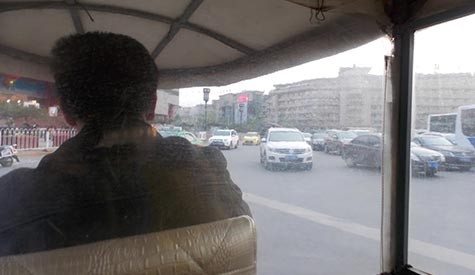
Virtually tourist-free, we spied locals making offerings outside and burning large bundles of incense. Being the only foreigners present, in spite of our discrete respect, we garnered a number of suspicious looks—as though we’d been pegged as spies. Feeling out of place, we left the temple area and returned to the main streets.
Venders filled the streets, lined with little booths and large department stores. During our walk through the city, we visited the Bell and Drum Towers. We went inside the Drum Tower and saw the Drum Museum with an array of drum types, and enjoyed a traditional drum performance.
Directly across from the Drum Tower stood the Bell Tower. The bells kept the time during the day and drums at night.
We must have been under the spell of the drums because we realized we didn’t have time to walk back to the hotel to meet for our dinner engagement. We decided to hail a taxi.
Rush hour had come. The streets burst at the curbs with cars, busses, scooters, and bicycles. The sidewalks were packed with people coming home from work and going out to dinner. Instead of waiting hopelessly for a taxi, we hired a three-wheeled rickshaw with a plastic film back—basically, a scooter with a homemade bench fastened to the back and a flimsy cabin of see-through plastic.
Our motorized rickshaw driver was a maniac! He sped the wrong way in heavy traffic, almost ran people over, negotiated tight spots between buses, trucks and large vehicles, and we almost got crushed between two huge busses. A few times, he went the wrong way in round-a-bouts so he wouldn’t have to go all the way around—busses and cars flying toward us; a traffic cop blew his whistle and motioned for us to stop.
Our driver didn’t. We buzzed old ladies and men scuffling on the side streets, their clothes fluttering as we sped by. Our driver seemed to like squeezing between busses and trucks when there wasn’t a lane between them.
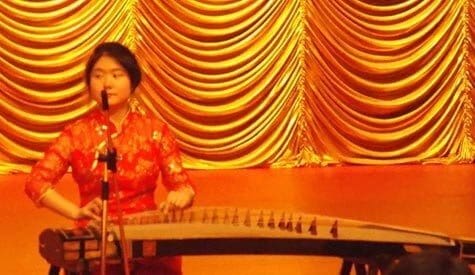
“This guy’s going to get us killed,” Nicole said.
“I’ll bet he’s doing this on purpose,” I said. “To give the Americans a scare.”
We made light of the situation. But it was a dangerous ride. We were wide-awake for the show!
Dumpling of a Dynasty
The dumpling feast featured eighteen different kinds of dumplings, accompanied by a Tang Dynasty show with costumes, acrobatics, and traditional Chinese song and dance.
After dinner, we drove thru the city walls to see the city at night. The “times square” of Xi’an with its Bell and Drum Towers, looked different lit up at night Back at our hotel, we could even see the illuminated towers from our hotel window.
But it was the terracotta soldiers who still occupied our dreams.
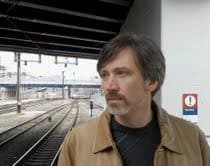
Eric D. Goodman is the author of Womb: a novel in utero (Merge Publishing, Spring 2017), Tracks: A Novel in Stories (Atticus, 2011), and Flightless Goose (Writer’s Lair, 2008) as well as the forthcoming Setting the Family Free and The Color of Jadeite. He lives in Baltimore, Maryland.
- Missouri Sports Travel Adventure: From Landmarks to Ballparks - January 21, 2026
- What First-Time Visitors Get Wrong About Visiting Iceland - January 15, 2026
- Bareboat Charter vs all-inclusive Crewed: Which Luxury Charter Fits You? - December 29, 2025


